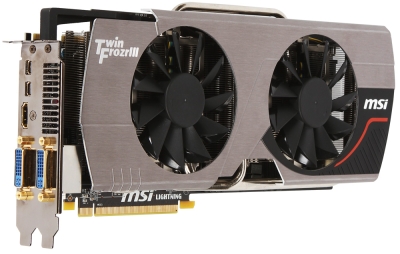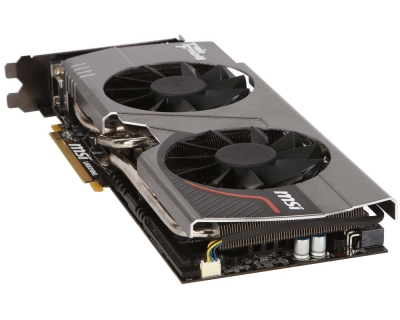The lightning machine has been working overtime, as it has brainstormed its way into two new additions to MSI's flagship range of graphics cards - Lightning. NVIDIA's GF110 and AMD's Cayman XT GPUs are on the meteorological chart today, with the launch of the N580GTX Lightning and R6970 Lightning.

Striving to deliver the perfect graphics card, the new additions to the Lightning environment are brewed with a host of MSI innovations. Beginning with the power delivery system, the company claims that its solutions deliver at least twice the amount of power available, compared to reference flavours, plus adopt an independent power system for the onboard memory. Stirred in with MSI's Military Class II components, a special attention to power stability wraps up to form what it calls, its Power4 Architecture.
Headlined as overclocking delights, both Lightning series flag-bearers play nicely with MSI's Afterburner overclocking utility, provide support for triple overvoltage and are blinged-out with hardware features such as V-Check Points - for those who want to get nifty with a multimeter. Dual BIOS flexibility and a PWM clock tuner, said to generate more stable PWM frequencies, round-off the package.

Adding some wind to its sails, MSI applies its latest Twin Frozr III cooling solution to both pedigrees. Tapping into propeller blade technology and a fin-array of dense aluminium - to whip-away heat transferred from the GPU - airflow concerns are apparently mitigated, and MSI claims that full load temperatures are up to 26° Celsius lower than reference solutions. Though lightning doesn't usually make a habit of going unnoticed, the Twin Frozr III solution also apparently delivers up to an 11dB advantage compared to reference offerings.
Peppered with 1,536MB GDDR5 memory, the N580GTX Lightning offers factory-fresh overclocks of 832MHz on the GF110 GPU, 1,747MHz shader clocks and 4,200MHz on the memory pedestal. Meanwhile, the AMD powered R6970 Lightning is sprinkled with a 940MHz core speed, and 5,500MHz effective on the 2,048MB GDDR5.
All in all, we have the makings of a serious thunderstorm as MSI touts that lightning strikes twice in its domain.













